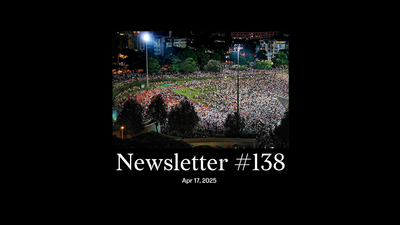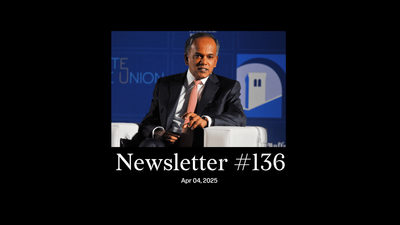Dear reader,
“Sorry for the inconvenience caused. We are fighting for our freedom.”
Some version of this message can be seen on placards held by activists from Hong Kong to Mexico City. It’s an apology from a small group of citizens to the rest: the roads we block, the jobs we stop doing, the press conferences we interrupt—there is a higher purpose, one that we all presumably share.
But that’s never really been the case in post-independence Singapore. “To many in Singapore, ‘activism’ connotes socially divisive rabble-rousers, marching in the streets or throwing cans of soup at glass-fronted paintings,” writes Isaac Neo, in this week’s essay, “Pragmatic resistance: adaptation or co-option?”
The so-called silent majority here has never seemed to share that higher purpose. Over time what has evolved, as Isaac explains, is a form of pragmatic resistance. He invites young voices to respond to this notion: Kate Yeo, climate activist; Ching S, gay rights activist; Rocky Howe, anti-death penalty activist; and Ripon, a Bangladeshi writer involved in a migrant worker-led community group.
As his subtitle alludes to, some consider pragmatic resistance to be a very Singaporean cop out: the state essentially anoints non-threatening “activists”, who in turn engage in a meek form of obsequious activism, one where they prize intimate sessions and selfies with “Shan”—the cutesy incarnation of K Shanmugam, a minister—over substantive change. (In Singapore This Week, we write about a recent interview Shanmugam gave to Our Grandfather Story, an online media outfit.)
The ultimate co-option happens, of course, when the activist is lured into politics. In 2020, Carrie Tan, founder of Daughters of Tomorrow, which helps low-income women, gleefully joined Shanmugam’s political team.
The divide between insiders and outsiders in the system, and the bonds between them, were captured in our profile last year of KC Chew, detained without trial as an alleged Marxist conspirator in 1987’s Operation Spectrum, an event that crippled a generation of activists.
Yet today has emerged again a wide spectrum of actors, particularly in the environmental movement, as Isaac’s interviewees explain. “It invites people to come in and do different things, and over time, people might shift and become more radical, [or] they might become less radical,” Rocky told Isaac.
For me, the youth-led energy of Singapore’s environmental movement, from the feisty discussions on Instagram to rallies at Hong Lim Park (read about the park’s history here), has been captivating. The environment is, after all, a perfect activism 101, a palatable entry point not only for would-be activists, but also for the rest of society, asked to put up with “the inconvenience”. How could you say “no” to a young person, concerned about plastic pollution affecting their future, asking you to carry around your own water bottle?
Some environmentalists, such as Chua Chin Tat, our protagonist in last year’s piece on Dover Forest, are on solo missions to not only inform society of urgent issues—the loss of secondary forests, in his case—but also to prod us to collectively reimagine processes around public discourse and consultation.
As you read Isaac’s essay, it’s worth contemplating contemporary Singaporean activism. Whether it’s because of generational change, political dynamics, social-media-influenced discourse or some other reason, it seems to me that more and more Singaporeans are listening to our activists—and starting to appreciate that the inconvenience, the occasional messiness of democracy, can lead us to a better place.
Jom buat,
Sudhir Vadaketh
Editor-in-chief, Jom
If you've enjoyed our newsletter, please scroll to the bottom of this page to sign up to receive them direct in your inbox.







